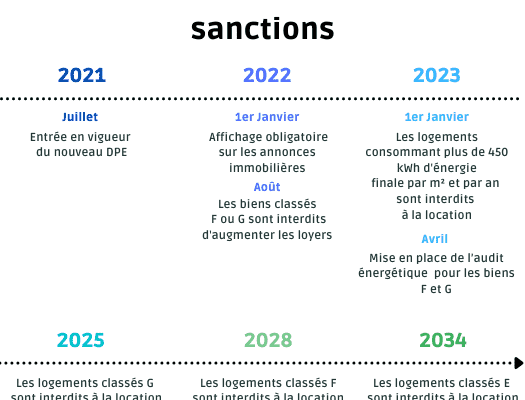According to a study published this Tuesday, January 3, 7 out of 10 homes are poorly labeled energetically. A bad score on the energy performance diagnosis (EPD) which could quickly have serious impacts.
Sanctions against thermal colanders, the most energy-intensive accommodations, are beginning to fall into place. Indeed, since January 1, 2023, dwellings consuming more than 450 kWh of final energy per m and per yearalso called G+, can no longer be rented.
But can we really trust the energy performance diagnosis (EPD) of a home? According to a Hello Watt study (1) publishes this Tuesday, January 3, it would seem not. 71% of DPE would not be correctthat is to say that they do not correspond to the consumption of the dwelling in kWh per m2 and per year.
And very often, the difference between the assigned grade and the Hello Watt study is enormous. Among the homes with an energy label and listed in the ADEME database, we have identified 221 that use the Hello Watt application. For these accommodations, we therefore have their actual consumption, and their area. We can thus match their actual consumption/m2 with their energy label, and therefore with their estimated consumption/m2, explains the company in its press release.
A well-rated thermal colander?
However, in 31% of cases, the energy label attributed to the property is not even a related label. A good is thus for example ticket E instead of B or C. In 40% of cases, the label does not match, and a neighboring label is assigned (for example: B or D instead of C). Finally, in 29% of cases, the energy label corresponds to the calculation. Note that ECD errors are made both to the benefit and to the detriment of property. A thermal sieve can thus be rated well, unlike a well-insulated apartment, which would see its rating plummet without explanation.
Retirement : save by paying less tax. 13 contracts compared
The study is therefore alarmist: If we imagined an unscrupulous diagnostician who would assign labels at random (respecting the national distribution and without even looking at housing), it would be good in 25% of cases (vs 29% above), thus assures Hello Watt. Faced with this great lottery, it is therefore difficult for some owners who will soon see their property prohibited from rental accept this decision without doing anything. 31% of owners intend to ignore the bans and continue to put their property on the market as is, without carrying out the work necessary for energy renovation.
(1) study carried out on more than 200 homes based on consumption data and the DPE of each.
